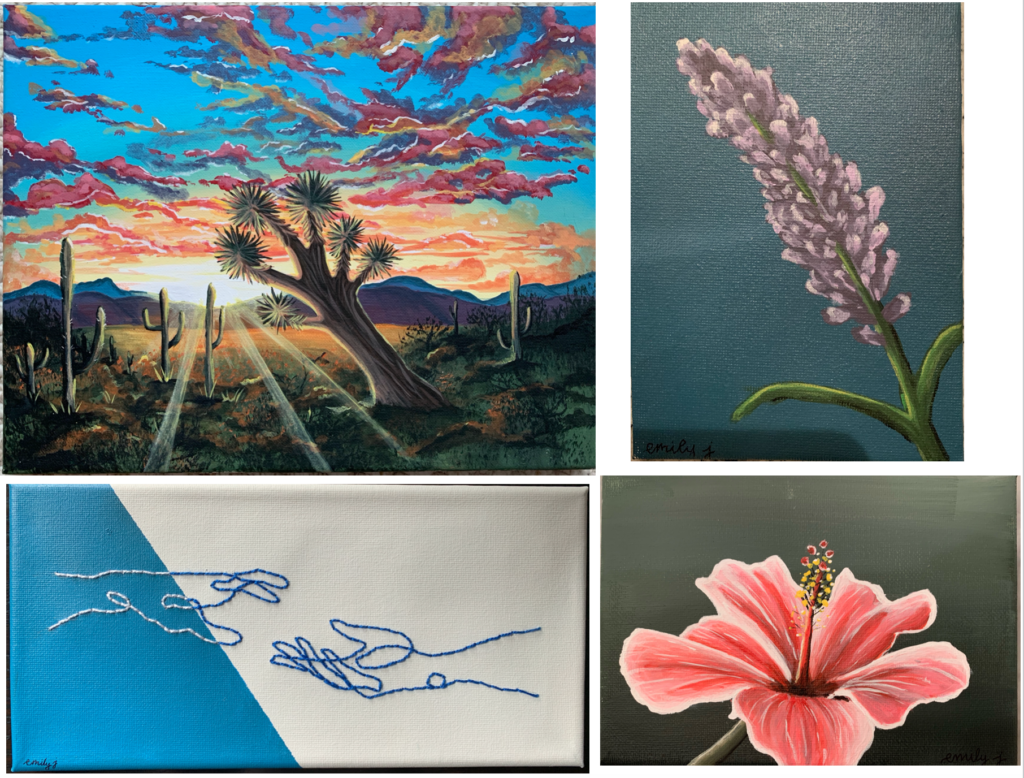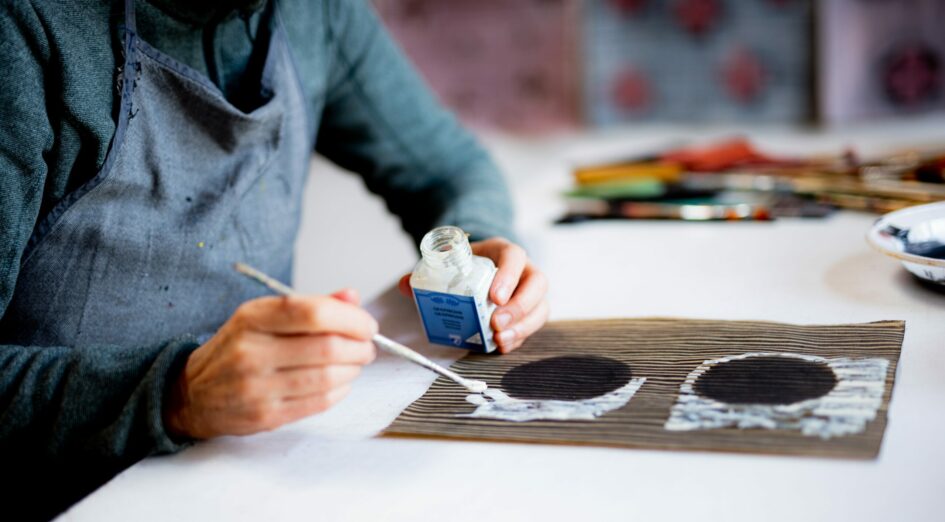When I was devising out a plan for what exactly I wanted to do and research for this project, art therapy was on the top of my list. Mental health is something I am quite passionate about, so combining ways to help mental health and art seems like the perfect combo!
Again, there are so many amazing resources about art therapy out there––and I will link some of the ones I looked at below. But from what I have gathered is that study after study has suggested that art therapy is an effective way to decrease stress and help mental illnesses such as anxiety, depression, eating disorders, or substance abuse disorders. Art therapy also helps people with PTSD or other emotional difficulties. It truly is such a flexible yet effective way to alleviate some of the mental and emotional lows someone may experience.
Of course, art therapy is not for everyone and that is something critical to keep in mind, especially when working with people who may be in a very fragile place in their life. However, you do not need to be artistically inclined or overly creative for art therapy to be effective. Simply expressing oneself through their art or even simply being in the presence of art has been shown to improve mental health or even quality of life in some situations. I find this so fascinating that even just being around art can help someone––perhaps that is why I find art museums so calming and peaceful.
Prior to this quick research, I hadn’t really known the extent to which art therapy can be used––how flexible it is or the different methods there are. And after learning about the actual science behind why art can reduce stress, it makes total sense as to why it is so effective. I love learning about different topics––especially when they are particularly relevant to me or about what I’m interested in, so this whole project has been super fun and engaging for me thus far.
Below I’ve also featured a few of my paintings! ~ not totally relevant to today’s topic, but I thought I’d share anyway. (As you can maybe tell, I really like painting plants haha)

References/ links:
https://www.verywellmind.com/what-is-art-therapy-2795755
Costa, A. M., Alves, R., Castro, S. L., Vicente, S., & Silva, S. (2020). Exploring the Effects of Guided vs. Unguided Art Therapy Methods. Behavioral Sciences, 10(3). https://doi.org/10.3390/bs10030065
Sonnone, A., & Rochford, J. S.. (2020). Wellness at Universities: A Group Art Therapy Approach. Journal of College Counseling, 23(2), 168–179. https://doi.org/10.1002/jocc.12157
Potash, J. S., Mann, S. M., Martinez, J. C., Roach, A. B., & Wallace, N. M.. (2016). Spectrum of Art Therapy Practice: Systematic Literature Review ofArt Therapy, 1983–2014. Art Therapy, 33(3), 119–127. https://doi.org/10.1080/07421656.2016.1199242

October 14, 2021 at 5:46 pm
Hey Emily! I really love your inquiry project! Art therapy seems like such an incredible tool with so much potential. Art has such a positive effect In peoples lives and I think it is often overlooked as just a “hobby” but studies like you’ve shown prove that. Also your art is amazing! you are incredibly talented and hope you are going to integrate that into your future classrooms as much as you can!
October 15, 2021 at 12:28 pm
WOW Emily!
Really interesting stuff about art therapy, I’ve been looking into it a bit myself, but I have to say your paintings are the star of the show! Absolutely incredible! The first one is especially striking. The colours, the way you you painted the light, the landscape – all gorgeous! You are really talented. Did you do some arts training in school? I think you could sell these if you wanted, although that might make it less therapeutic.
October 17, 2021 at 1:36 pm
Hi Emily!
I really enjoyed reading about all the research you’ve done on the benefits of art therapy! Can I just say that you’re paintings are amazing and I wished I was that talented in art. Even though I’m not even close to being good at art I still find that when I am really stressed I like to colour. Thanks for sharing!